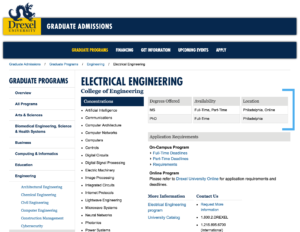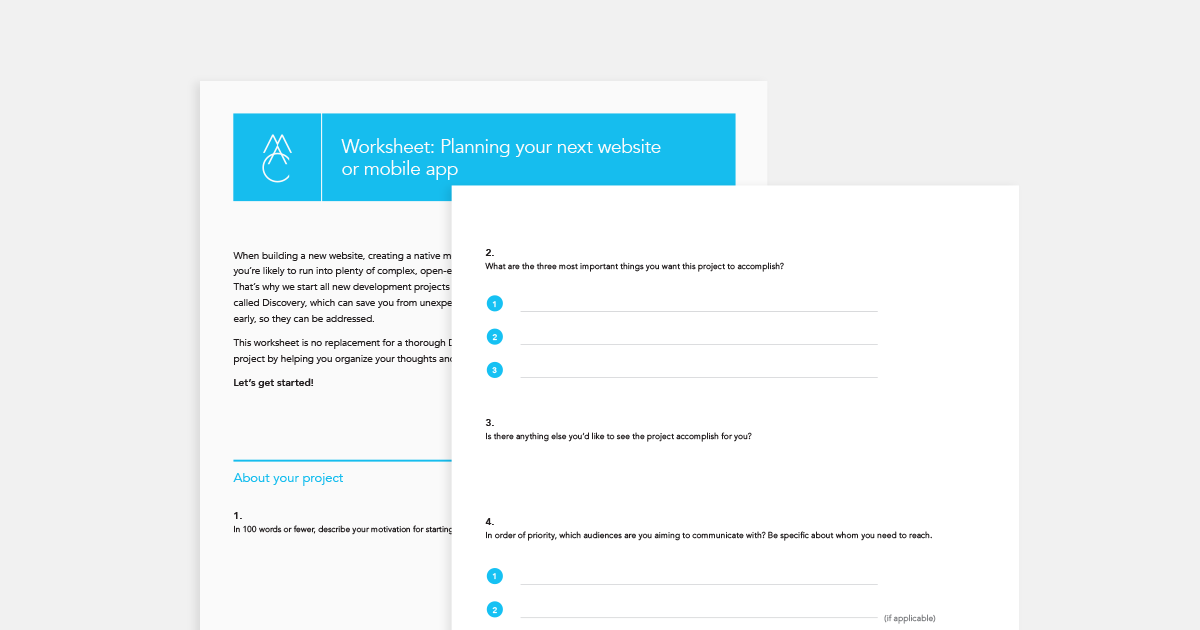
A better way to brand and market online degrees
Universities coast-to-coast are offering an ever-increasing number of degrees and certificates online these days (craft brewing or turf grass management, anyone?) While the stigma of earning a degree online is not what it used to be even five years ago, there are common obstacles to overcome when it comes to branding and marketing any online program. After all, when deciding which schools to apply for, prospective students will always ask themselves the same questions.
Is this program a good value? How will it look on my resumé?
And, when choosing between on-campus and online options: Is this really the same degree? Really??
Why positioning matters
With this in mind, I believe many universities are making costly mistakes with how they’re positioning their online vs. brick-and-mortar 4-year degree programs. (I use the term positioning here to describe all the ways a university brands and markets itself in an effort to pull students away from competitors.) Correcting these mistakes may not be easy given the siloed nature of many colleges and universities, but doing so will undoubtedly lead to increased enrollment in online programs.
Below are three case studies highlighting examples of what should and shouldn’t be done with online degree positioning. Whether it’s developing a separate website or a clever new name, maintaining two brands for the same diploma ultimately places doubt in the prospective student’s mind and makes marketing more difficult. There is a better way.
Case study 1: University of Washington
Today, when pursuing an online degree in early childhood development at the University of Washington (UW), prospective students are directed away from the university’s main website to an “Online Early Childhood and Family Studies” website which, confusingly, has a completely different look-and-feel and admissions process from UW’s College of Education.

Above: UW’s College of Education website for Early Childhood & Family Studies — on-campus admissions.

Above: UW’s College of Education website for Early Childhood & Family Studies — online admissions (ironically, it’s not optimized for mobile devices).
Present a single enrollment path
A better experience would be to direct students to a shared enrollment page offering two options:
- Do you want to take classes primarily on campus; or
- Do you want to take classes primarily online?
Then, based on how this question is answered, the website would present the various program offerings that match, followed by clear, step-by-step instructions on how to enroll — regardless of whether the student will be taking courses in-person or online.
Using a single enrollment path will allow online learning to be viewed on par with the traditional brick-and-mortar classroom experience, while at the same time leveraging the positive reputation of the university. The goal should be to communicate one university and one high quality education, with the flexibility of two enrollment options.
Strategically price online programs
Another positioning mistake UW makes is how it prices its online programs. In March 2013, the university announced it was offering a new “low-cost online-only degree” in Early Childhood and Family Studies. They touted the online program as an affordable alternative to “help fill a national growing demand for preschool teachers.” But while positioning the online degree as low-cost may sound like a benefit to students, the flipside is that it reinforces the stigma that online degrees are less valuable than those earned in traditional classroom environments. Here’s how costs vary for full-time students, per quarter, for the same degree at UW:
- Online: $2,595
- On campus, state residents: $3,947
- On campus, out-of-state: $11,381
If the University of Washington’s leadership is legitimately concerned about lowering the enrollment barrier for future preschool teachers, a better approach would be to price its online and resident programs the same, say at $3,271 (taking an average of the current pricing for residents and online). This would allow more students to enroll in either option without diminishing the value of an online education.
Some colleges and universities go a step further by pricing their online programs higher than those for on-campus state residents, effectively valuing their online programs somewhere in between resident and nonresident offerings. For example, Oregon State University (OSU) — a top-10 ranked university for online bachelor’s degrees — charges twenty percent more for full-time enrollment in their online program. Here’s how OSU prices its degree offerings, per quarter:
- Online: $4,200
- On campus, state residents: $3,369
- On campus, out-of-state: $9,589
This pricing strategy makes sense because many students applying for online programs are from out-of-state and would otherwise be paying significantly more for what should be the same degree. (OSU does a nice job providing students with a comparison chart of tuition and fees for on-campus vs. online.) Couple this with savings on relocation costs and the ability to fit classes around a student’s work and/or family commitments, paying twenty or even thirty percent more for an online degree is still a bargain. Most importantly, OSU is communicating a critical message of branding singularity: same degree, same university.
On the other hand, tuition prices for online degrees offered by the University of Washington may cause prospective students to wonder, Is this really the same degree?
Case study 2: University of Southern California
The University of Southern California (USC), founded in 1880, is world-renowned for its academic and athletic programs. In fact, Times Higher Education ranks USC as having the 13th best reputation on the planet.
However, when the university rolled out its new online program in May 2011, they made a significant mistake by branding it as something unique and different. Introduced as “USC Now”, the university wrote in a press release at that time how the launch of the online program included “a new website — USCNow.usc.edu — to help distinguish USC’s brick-and-mortar offerings from its growing number of online master’s degree programs.”
Distinguish from? Why would a university with a world-class reputation and 130+ years of brand equity want to position its online student experience as anything other than a “real” USC education?
Integrate online programs with the core university brand
Just a few months after the rollout of USC Now, a new logo and identity system for the university was also introduced. And yet, while the rest of the university was updating logos and signage and websites, the USC marketing department didn’t bother to integrate its online program into the new university branding system for two more years, further widening the perceived gap from “traditional” USC.
After another year passed, school officials finally recognized that the USC Now sub-brand was counterproductive and decided to drop the name altogether, replacing it with the more descriptive “USC Online” in 2014. Today, while the naming and look-and-feel has come together under a single university-wide identity, USC regrettably directs students into a separate website and enrollment path for its online degrees — the same dual-path enrollment experience that UW uses.
Take a look at the website screenshots below to follow the changes in how USC has improved its online degree positioning over the past five years. (Hat tip to archive.org.)

August, 2011: The “USC Now” sub-brand is introduced

April, 2012: A new USC logo is introduced, but “USC Now” continues to use the university’s old branding

May, 2013: “USC Now” is restyled to match the university’s new branding

July, 2014 — present: “USC Now” is changed to “USC Online”
Case study 3: Drexel University
In many ways Drexel University is doing it right. If a student visits Drexel’s website looking for information about a graduate degree in Electrical Engineering, for example, she can quickly see there are two options: either take classes online, or take classes at their Philadelphia campus. Drexel lists them both side-by-side, effectively communicating that the student will receive an identical degree regardless of location.
Display clear options for enrollment at the program level
While Drexel does maintain a separate website for marketing its online programs, students who start at the main Drexel.edu website are presented with clear options for enrollment at the program level. In other words, when students land at the graduate studies page for engineering they have information about every degree option available to them — including those offered online.

Above: Drexel’s College of Engineering website lists on-campus and online programs side-by-side at the program level.
Seems obvious, right? But with so many universities building walls between their online and on-campus degrees, Drexel doing the “obvious” is quite refreshing. It’s a better experience for students, and it’s better serving the university’s brand.
One more thing Drexel does right is tuition pricing. Students pursuing an MS in Electrical Engineering will pay $1,157 per credit, regardless of whether they’re taking classes online or on campus. Same school, same cost, same diploma.
How to position online degrees at your university
With what we’ve learned from these three case studies in mind, here are a few pointers for improving the positioning of your university’s online program.
- DON’T position online programs as something different. This includes what you call it and how it’s priced. Resist the urge to develop a separate online sub-brand. Instead, focus on leveraging the university’s rich history and brand equity. Charging the same (or more) per credit hour for in-person and online degrees will further underscore the fact that it’s the same high-quality education.
- DO use a single website and admissions process for online and on-campus degrees. Creating, marketing, and maintaining separate websites for the same degree is both confusing and costly. If you want students to see online programs as the same, then stop branding them separately. The process students use when gathering information and applying should be identical for both options.
- DO provide tools for students to compare on-campus and online programs. Not all degrees may be offered online, and that’s okay. What’s important is that the two options are placed side by side and shown as equals in terms of educational quality. Be sure to focus on how the programs are the same: tuition costs, degrees offered, and other factors such as whether or not an internship is required.
Do the positioning challenges described here ring true for your college or university’s online degree program? What else could be done to improve the experience for students and increase enrollment at your school? Let’s talk.
This article is also published on Medium.
More Resources
-

Article
How to build a higher ed website that achieves excellenceIt’s one thing to deliver an excellent student experience on campus; quite another to build an excellent website. Between us...
-

Worksheet
Planning Your Next Website or AppWe recommend starting any new development project with a thorough research and strategy phase called Discovery, which can save you...
-

Article
Taglines, slogans, and other messaging: New rules for differentiation in higher edMore than just words Whether it’s a tagline or a slogan, a motto, or a mantra, the rules are the...



